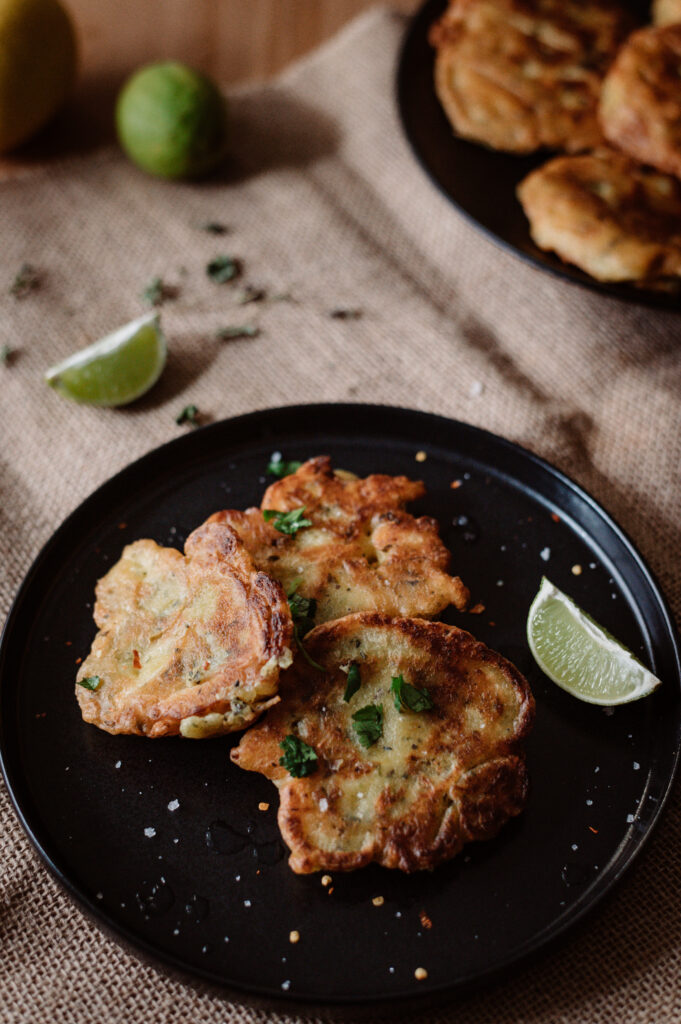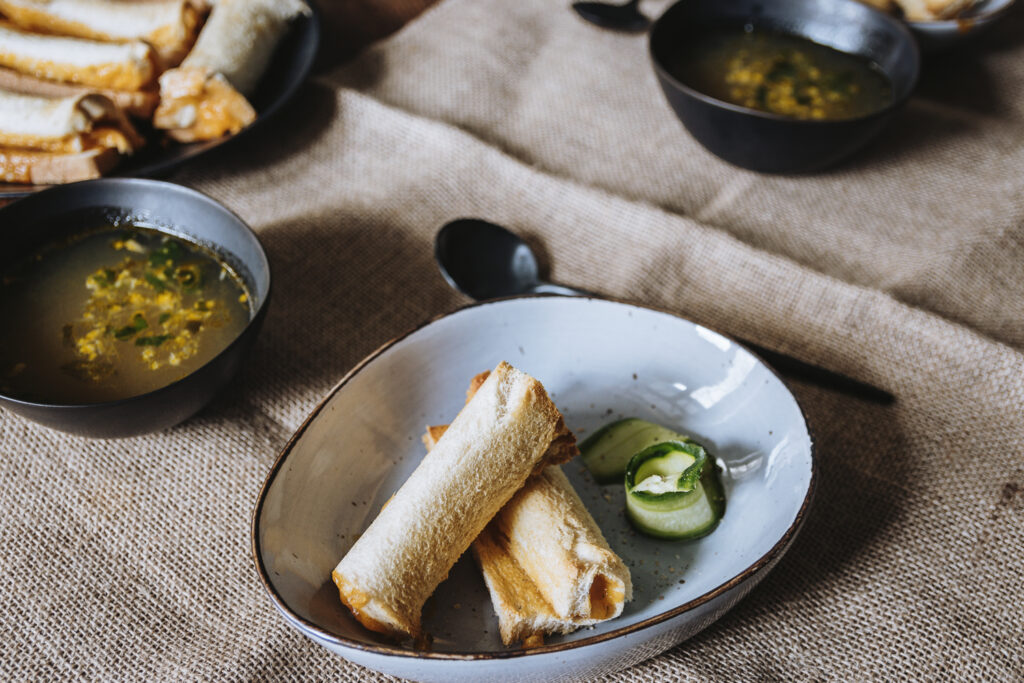
WHITEBAIT FRITTERS
A vegan version of a famous New Zealands delicacy will make you crazily excited.

New Zealand
The cuisine of New Zealand is a result of waves of migrations from the Pacific Islands and Europe combined, with a variety of New Zealand’s natural resources, fertile land and rich seas.
New Zealand consists of three islands (North Island, South Island and Stewart Island) located in the South Pacific Ocean, south of Australia across the Tasman Sea. According to archeological evidence, it was discovered approximately AD 1300, by the Polynesians from islands in the northeast. Through centuries the number of settlers was growing, gradually developing into Māori culture. The Polynesian migrants brought many root plants, including kūmara (sweet potato), taro, uwhi (purple yam), hue (long melon or Tasmanian bean) and tī-pore, but many other vegetables were not known to them. However, Māori became exceptional hunters and gatherers, enjoying the island’s abundance of bird and marine life. They also believed that the earth was the giver of life, which is why dishes were cooked underground in pits called hāngi. Meats and vegetables were wrapped in leaves, placed on hot stones at the bottom of a pit and covered with foliage, cloth and earth. Food was also prepared by roasting and, in geothermal areas, boiling or steaming over natural hot springs and pools.
The first European to come to New Zealand was Abel Tasman, who came to the South Island in 1642, and battled with some Māori, quickly departing without any significant exploration of the area. More than a century later, James Cook arrived in New Zealand and mapped almost the entire coastline in 1769 and 1770. Following Cook, many European and North American whaling, sealing, and trading ships started arriving in New Zealand bringing food, weapons and metal goods. At first, Māori, confronted with food shortages, welcomed incomers and accepted the introduction of potatoes, pumpkins, wheat, corn and sugar with open hands. But after several bird species disappeared, weapons and diseases brought by Europeans costed many Māori their life and they started losing land to settlers, their attitude changed.
Soon Christian missionaries began arriving in New Zealand, eventually converting most of the Māori population. In 1839 missionaries proposed that the British take control of European settlers, Pākehā in New Zealand and the following year it became part of the British Empire, after the signing of the Treaty of Waitangi between the British crown and Māori chiefs. The treaty promised equal rights for the indigenous people, but through ever larger migrations from Britain, war and enforcement of British economic and legal systems, indigenous people lost most of their land and ability to produce their own food, leaving them in poverty. Only in recent history did Māori start gaining some of the rights promised in the 19th century.
The settlers also changed the culinary culture of New Zealand. The Māori cuisine was mainly based on seafood, but Europeans considered it a food of the poor, even though many did consume it. As most of the Pākehā settlers were of British origin, they tried to reproduce the foods of their homeland as much as possible. The one difference was that meat was easily available to all social classes in New Zealand, so whereas laborers in the nineteenth century Britain ate meat in small quantities, in New Zealand they could have it for every meal.
When New Zealand gained full statutory independence in 1947 and travel abroad became easier and more affordable, travelers discovered other culinary cultures such as French and Italian, and many new ingredients were introduced to New Zealand cuisine. Furthermore, The Immigration Act 1986 changed New Zealand’s attitude to immigration, resulting in a large influx of people from East Asia, Southeast Asia and South Asia. Many of these immigrants have brought their traditional cuisines to New Zealand and often opened ethnic restaurants and takeaway eateries, further expanding New Zealand’s cuisine.
Today, New Zealand’s cuisine is a union of revived old Māori cooking traditions and all the later influences, including dishes like Hāngi, Boil Up, Cheese rolls or Kiwi Burger. It is also worth mentioning that New Zealanders have a famously sweet tooth, always ready to enjoy one of the many sweet dishes including the well-known Pavlova cake – a meringue filled with whipped cream and topped with fresh fruit – a source of long-standing debate as to whether it was a New Zealand or Australian invention.

A vegan version of a famous New Zealands delicacy will make you crazily excited.

This toasted white bread with warm and creamy cheesy sauce is a perfect party snack.
Thank you for taking your time and reading our recipes! We hope that we have inspired you to try out some dishes.